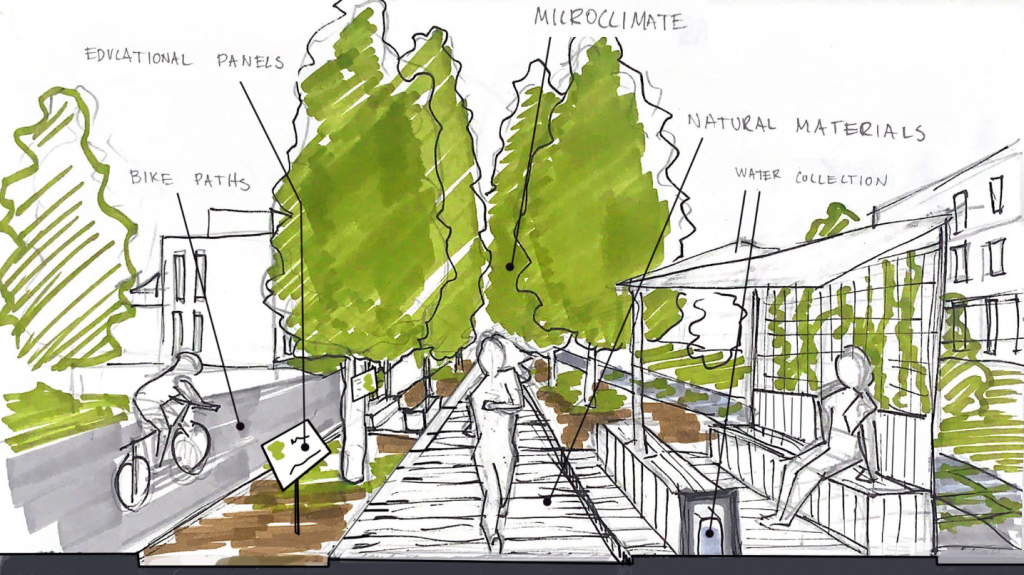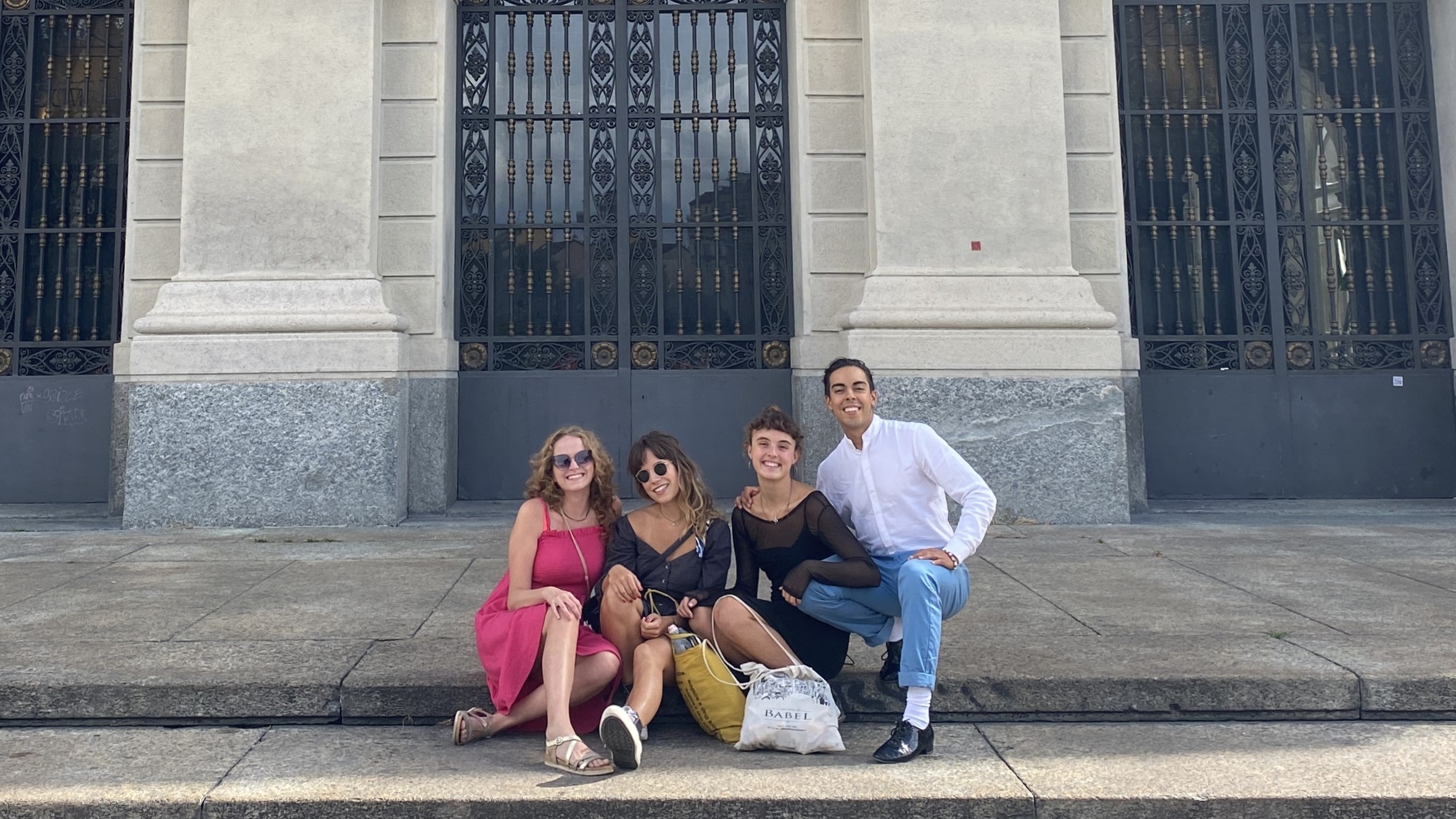
In 2 weeks our students developed creative and innovative solutions, but just one can be implemented at the UAB campus
The Uforest Innovation Challenge allowed students from our Specialization School to work on a real urban forestry solution. From administrative and ecological constraints to communication and stakeholder engagements, our students gained in-depth knowledge on the different aspects of project development.
To further highlight the multidisciplinarity of urban forestry, students were divided into 4 teams mixing the varied background and expertises. This helped them to address the different aspects involved in the development of an urban forestry project.
The Uforest Innovation Challenge
In 2 weeks, the 4 teams had to find the best solution to create a climatic refugia on the campus of the Universitat Autònoma de Barcelona. In particular, students had to address the following challenge: how to provide the basic ecosystem service of a forest-based climatic refuge (shadow and heath mitigation) while promoting biodiversity conservation, and ensuring a reasonable use of water? Considering local conditions, species functions and services was therefore essential.
On the last day of the Specialization School, the 4 temas presented their project to a jury composed by experts of the Uforest partnership (Cecil Konijnendijk – NBSI, Florencia Florido – CREAF, Colm O’Driscoll – Etifor, Jorge Olivar – Agresta, Declan Cahill – Trinity College Dublin, Erica Alghisi – ERSAF, Petronela Candrea – Forest Design, Ilaria Doimo – Etifor, Jose Luis Tomé – Agresta, Maria Chiara Pastore – Polimi, Joan Pino – UAB). Each project has been evaluated on 3 main criteria: innovation, impact and scalability.
4 teams, 1 winning project
To present their project, each team had to produce a manifesto and a presentation illustrating the strong points of their idea and how it would respond to the specific topics of the Innovation Challenge. At the final presentation – held in Milan on the 23rd of September – we were amazed to see the professionalism with which each group worked on their project, as well as the creativity they put into it.
Check out each box to learn more about our studentn’s innovative projects:
Bosc Glial was developed by Bianka Łomnicka, Júlia Alegre, Juliana Voinescu, Laura Saison and Luis Torres. This project focuses on enhancing biodiversity, while engaging students in forestry, educational and art activities. In fact, Bosc Glial is not only a forest, but also an educational and social space for students, featuring an open library. Taking into consideration water consumption, this group envisioned a green corridor to regulate the water cycle by desealing and collecting water in water tanks, included in the green corridor.
Ada Muszalska, Alaitz Meiyue Azcona Marcos, Roushni Thakur, Dobrochna Klimczak, Vladut Stefanescu developed the Meandering Forest. The project focuses on community engagement, with the aim of improving social interactions and the wellbeing of the university’s staff and students. At the same time, the Meandering Forest enhances biodiversity and provides a cooling effect by working around existing nature. These two goals are perfectly synthesized in the edible garden, which promotes healthy eating habits while increasing biodiversity.
Belen Belda, Maddalena Scalera, Mihai Lucian Stoica, Melisa Ardelean, Irmina Kaźmierczak developed the UNIFOREST, a natural mediterranean forest inside the university campus. The UNIFOREST is a complex, dense, multi-layered system composed of drought-resistant species. The aim is to create a green space suited for the extreme climatic conditions resulting from climate change. Finally, through informative and interactive panels, the project aims at promoting environmental education and citizens’ role in nature conservation.
The team composed by Florencia Garza González, Maria Ibarz Guasch, Alex-Robert Moldovan, Alexander Otto and Enrico Guiguilé developed the project ‘Diversity as an Urban Recipe’. This project features different components: the pavilion, a food forest, a pocket forest (Miyawaki forest), the garden of senses, and the amphitheater. All these areas have a specific function, such as increasing biodiversity and attracting pollinators, promoting knowledge and learning, providing a space for recreational and cultural activities, and mitigating floods.
Finding one winner proved to be quite hard for our jury: each group presented very good ideas, with innovative and applicable elements. However, just one project could be chosen and be implemented in reality. After long discussion, Bosc Glial was declared the winning project – congratulations to the whole team!
Now, Bosc Glial will be integrated into the implementation of a new climatic refugia in the UAB campus through the Uforest tree planting campaign.
